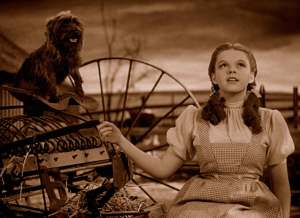Cultures of the world are full of traditions. Some are time-honored. Some are silly. Some both. Made famous by Hemingway in his novel, The Sun Also Rises, Pamplona Spain is home to one of the most random I’ve ever encountered that is all of the above: The Running of the Bulls. Perhaps you’ve heard of it?
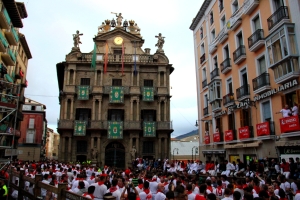
Hundreds of people, dressed in red and white, take to the street (only one, sectioned off by wooden blockades) to run and jog alongside half-ton beasts with pairs of 18″ daggers protruding off the front of their heads. Many of these runners are drunk – let’s face it, you’d have to be right? But not all of them.
My wife was recently one of the sober ones (and she still chose to do it). If you don’t know what it is, allow me to wax intellectual about it for a brief moment. Six bulls are let loose to run as fast as their little hooves can carry them up and around the twisting, turning streets of the medieval section of Pamplona during the festival of San Fermines every July.
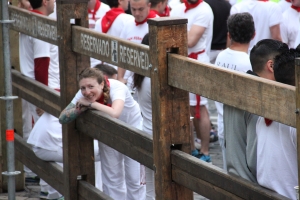
Originally, the custom dates back to the 14th Century when it became necessary to use fear and excitement to entice the bulls to run faster and faster (and the butchers themselves wore white). What evolved was a competition between men to see who could do the best job of scaring the bulls into the corrals. Enter the Spanish concept of Machismo with men trying to showcase their bravado and you have the contemporary Running of the Bulls.
The course ends at the Plaza del Toros where the bulls are kept for a few more hours between the morning run and the evening bull fights, an event during which time the bulls are ruthlessly toyed with for the amusement of the expectant crowd before being callously slaughtered – by the matadors – for no apparent reason. They do eat the meat, and honestly the killing is more humane than most American slaughterhouses. And it’s tradition. So it’s okay.
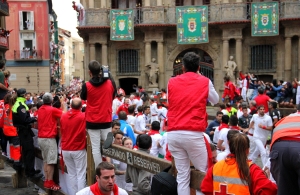
Jen decided she needed to run, not once, but twice. The first time was just a run through (no pun intended) and she felt as if she could do better. So she did. The second time around, she waited for the bulls to make their presence known before starting her brief jaunt. Two men tripped and fell in front of her so she had to leap over their bodies, solidifying her opinion that she actually participated in the event (because running in and of itself doesn’t quite count). Don’t forget, this is the girl who sneaked into the Dome of the Rock and drove across the Sinai peninsula with an armed escort.
Contrary to popular belief, Pamplona isn’t the only city that hosts a running of the bulls. Smaller villages all over northern Spain do their own version of the run, sometimes with less bulls, sometimes with cows instead (did you know they have horns as well?), and sometimes with both. For example, the principality of Viana does a run with three cows and one bull. And another small village of Alfaro (in the La Rioja region of Spain) does an afternoon run with bulls and another run in the mornings with cows.
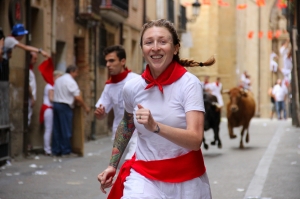
Additionally, there’s a fire bull for the children. What’s a fire bull? Funny you should ask. A fire bull is a 30kg headpiece with handlebars and fireworks shooting out from the sides. Some guy dons this device and chases after children as young as three years old. The saying goes that if you get burned by the fireworks, you’re running too close to the bull. That way, when you’re old enough to run with the real bulls, you’ll know to keep well ahead of them. Fun, right?
So the next time you’re bored, you can either head off to the local bull ranch and tease a bull, or just shoot off some fireworks at your kids. That’ll get ’em running!
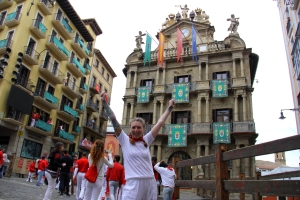
Hasta La Proxima…
-Justin
